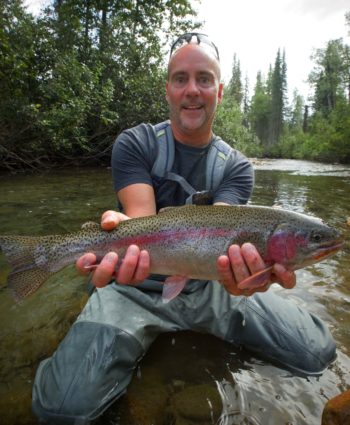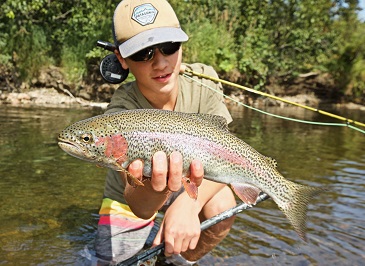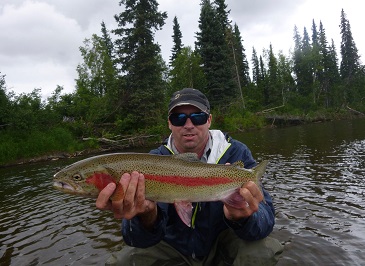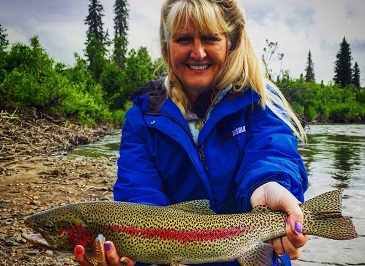Page - Rainbow Trout Fishing
RAINBOW TROUT FISHING IN ALASKA
Rainbow Trout in our part of Alaska are catch-and-release and one of the most sought after fish species in the state. Ever since the early 70’s, fishermen have been catching these “leopard-spotted” beauties and then saying a long tearful goodbye. And because they’re catch-and-release, there are many monsters in our waters, which is why our only bit of advice for trout-hungry-fishermen is this:
Bring a friend. Otherwise who is going to believe you when you catch a 23-incher that’s so fat you can’t wrap your hands around it?
Another big thing you’ll need to know about our rainbow are they’re athletes. They are natural predators born in wild rivers. Our waters are not dam regulated fisheries, so these fish don’t vacation for half the season in slow running waters and munch on McDonald’s. Our rainbow trout spawn and die in our tributaries and live to be 7 to 8 years old. That’s eight years of swimming upstream in fast, wild running waters. So do your push ups before arriving at Talaheim, because our rainbow trout will take you for quite a ride.
By August our rainbow trout have gained at least 30% of their total spring body weight. So normal bows that might’ve been 18-20 inches and 4 lbs at the beginning of the season are now 5-6 lbs, and our grandpa once-in-a-lifetime-bows might range from 23 inches and 6-7 lbs.
If you want to catch these rainbow trout during high season, anything goes: mice, dry flies, egg sucking leaches. They’re used to seeing it all, and they’re hitting it all. So you might find yourself changing it up a bit more often than you would if you were at Talaheim in July, but the trouble will be worth it.
The biggest difference between our “Leopard” trout and trout you might catch elsewhere is their brightly colored spots and pink underbelly. Even their eyes have spots.
The biggest difference in catching these trout versus catching them in other places is that we’re a single-hook fishery. Believe me, one hook will do the trick and you’ll definitely know when they bite.

THERE ARE SOME HOGS IN OUR WATERS



